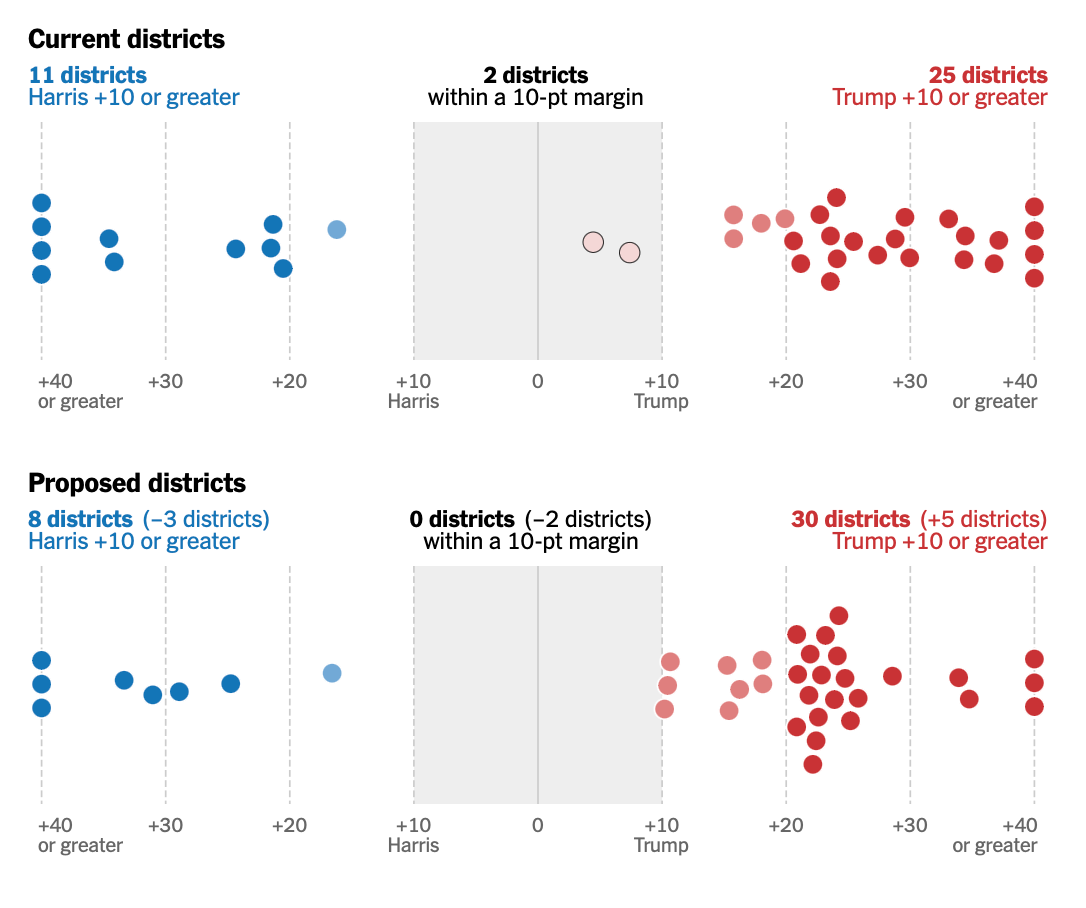Why the Texas gerrymander was overdue
Proportional representation what-ifs, the Mothership vortex, my op-ed on Apple's threat to polling, why Dems hate their party, polling young voters is hard, working class media habits, GPT-5
No. 370 | August 8th, 2025
🇺🇲 2026
The political world is abuzz over redistricting again.
A quick reminder here: when it comes to redistricting, there is no principle. There is only power. And that’s true of both sides.
The New York Times compares how the presidential margin in the Texas GOP’s newly proposed districts stacks up against the old ones.
This is the map that the GOP should have pushed through in 2022. But instead, in the post-Census redistricting, Texas Republicans played it safe, shoring up incumbents with ultra-safe seats that meandered from the suburbs deep into the rurals. That’s because they were spooked by the huge population growth numbers being put up in places like the North Dallas suburbs gradually turning these areas blue. Any suburban seat was shored up with a hefty dose of rural and exurban Republicans to survive a decade of California transplants moving into the Texas suburbs.
This now looks like a miscalculation. Not only did Texas see a huge shift right among H…




